What to Do When Encountering Wildlife in Algonquin Provincial Park
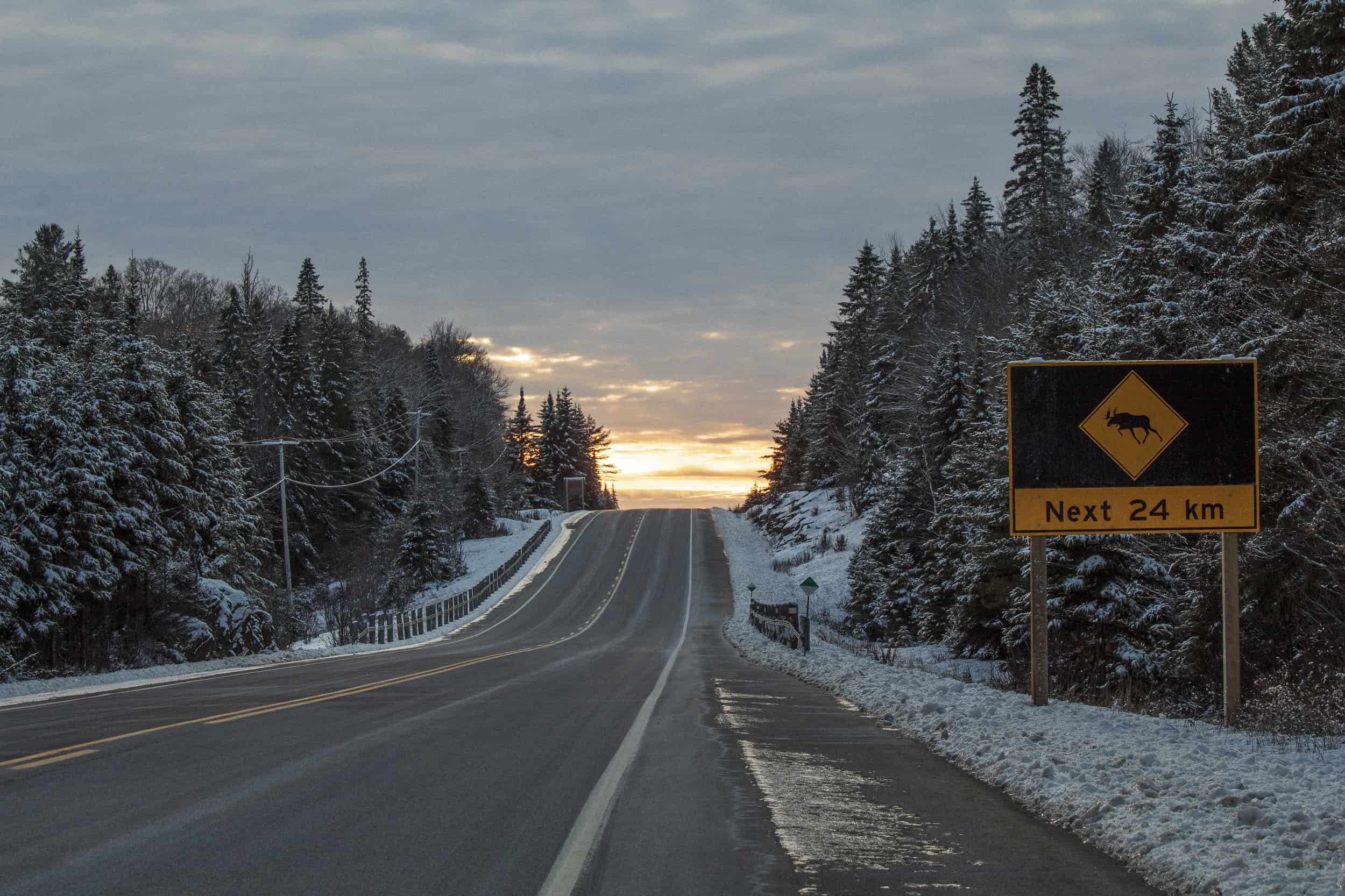
Have you ever stumbled upon a furry friend like a squirrel or chipmunk on your hiking adventures? How about a moose? Or a bear? Encountering wildlife is a natural part of hiking in Canada. In Algonquin Provincial Park, you will likely encounter wildlife you have never seen before.
Algonquin is among the largest and oldest provincial parks in Ontario, Canada. It is 7,630 km² or 2,946 square miles. That’s larger than Prince Edward Island and about the same size as Delaware and Rhode Island combined.
It’s not hard to see why this park is a hotspot for wildlife, but what do you do when you cross paths with a wild animal? It doesn’t matter the size of the animal; we should be mindful and respectful of every creature we encounter in the wild.
Tips for Seeing Wildlife Along the Road
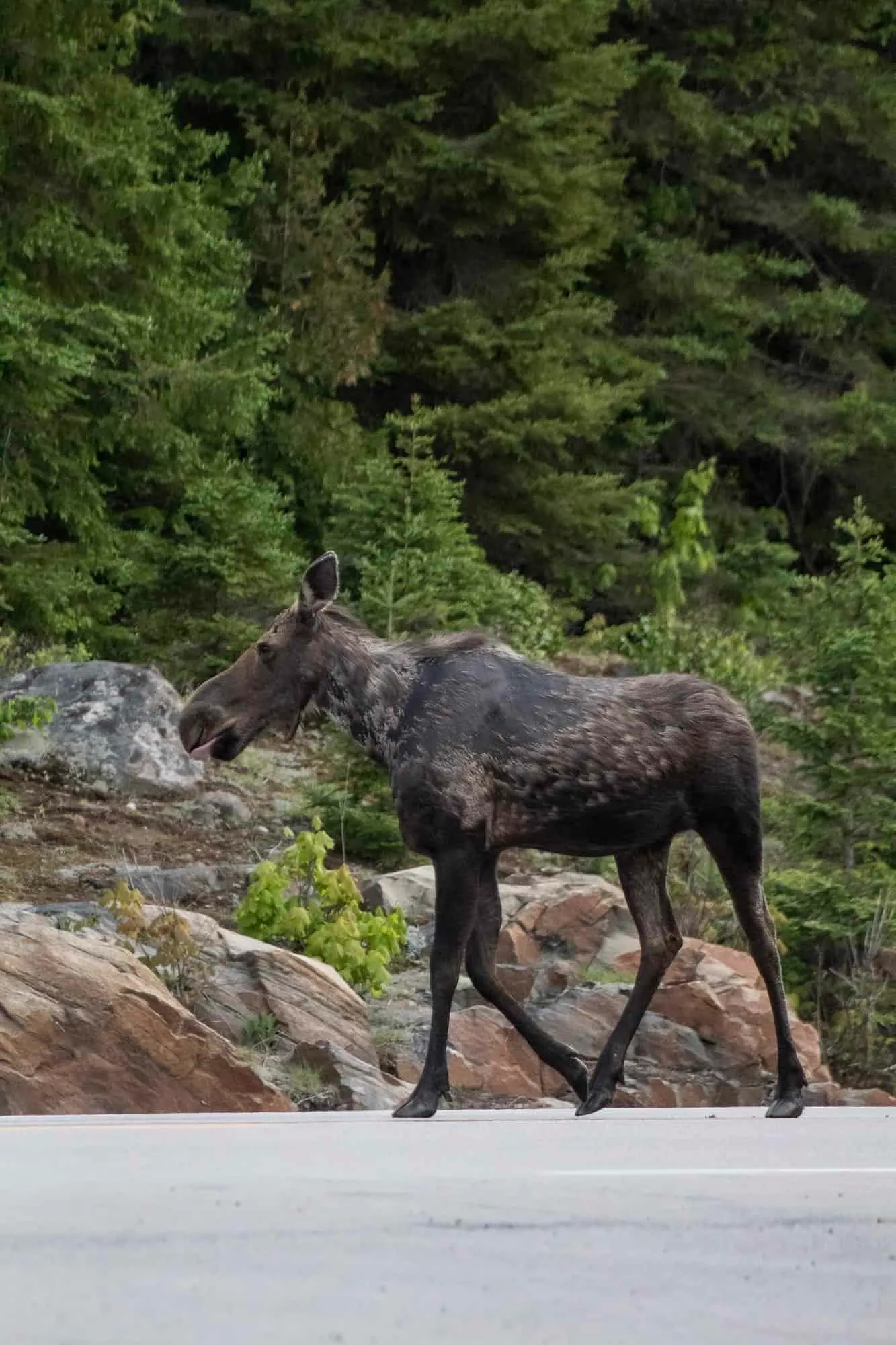
Drive Slow
It’s easy to zoom into Algonquin because it is on Highway 60, with a speed limit of 80 kilometres per hour—and people tend to go faster. This increases the chances of hitting wildlife. My first recommendation is to slow down—especially after dark! Treat the speed limit as 60 kilometres per hour in the dusk, dawn and evening.
Commit to Pulling Over
Because Algonquin is on a highway, transportation trucks carrying heavy cargo and tour buses drive through the park. Tragically, people have lost their lives here. It’s an extremely dangerous road and drivers should not soak in the scenery instead of paying attention to traffic. Please be mindful of the designated areas to pull over.
Pull Over for Wildlife
In the spring, moose can often be seen drinking water from the ditches along Highway 60. It’s a surreal moment to be in the presence of a moose, but please stay at a distance. At any sign of threat, a moose may charge—especially when they are with their young. Sadly, once I was driving behind a vehicle that didn’t let the moose cross the road. Instead, the driver decided to inch her car closer with her cellphone out the window. Nothing in this world is worth a photo—not your life or the well-being of an animal. When encountering wildlife, always respect their space. Only pull over and admire their presence if you are sure it is safe to do so.
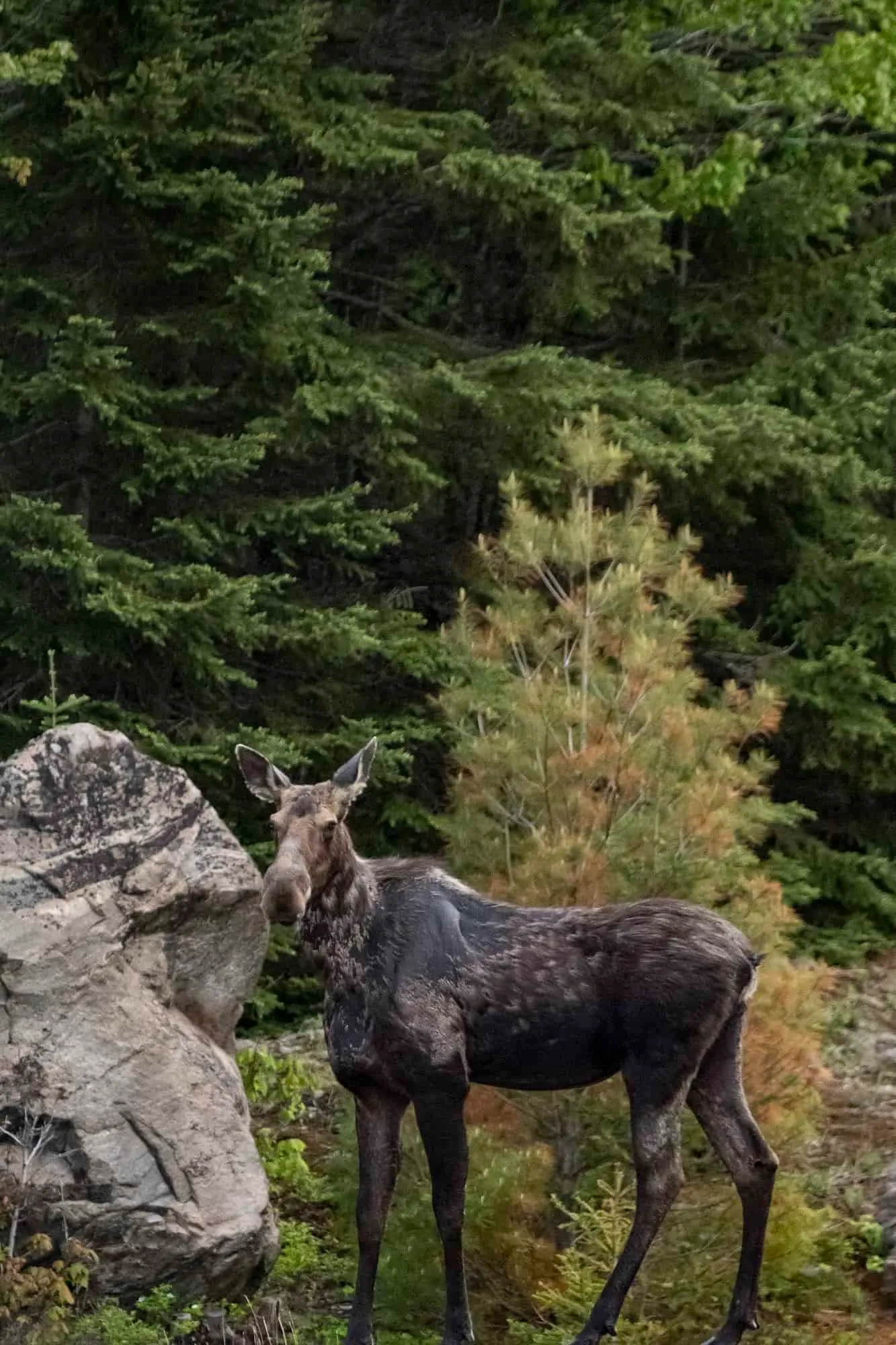
Now you know what to do when you see wildlife from your car. What about when you’re on the trails? I reached out to Patrick Moldowan, wildlife biologist and PhD candidate at the University of Toronto, who conducts his research at the Algonquin Wildlife Research Station in Algonquin Park. This non-profit field station conducts long-term scientific studies focused on wildlife biology and conservation, as well as student training and outdoor education.
After chatting with Patrick, I learned about hiking trail etiquette and a couple of tricks to make us better wildlife stewards.
Tips for Seeing Wildlife Along the Trail
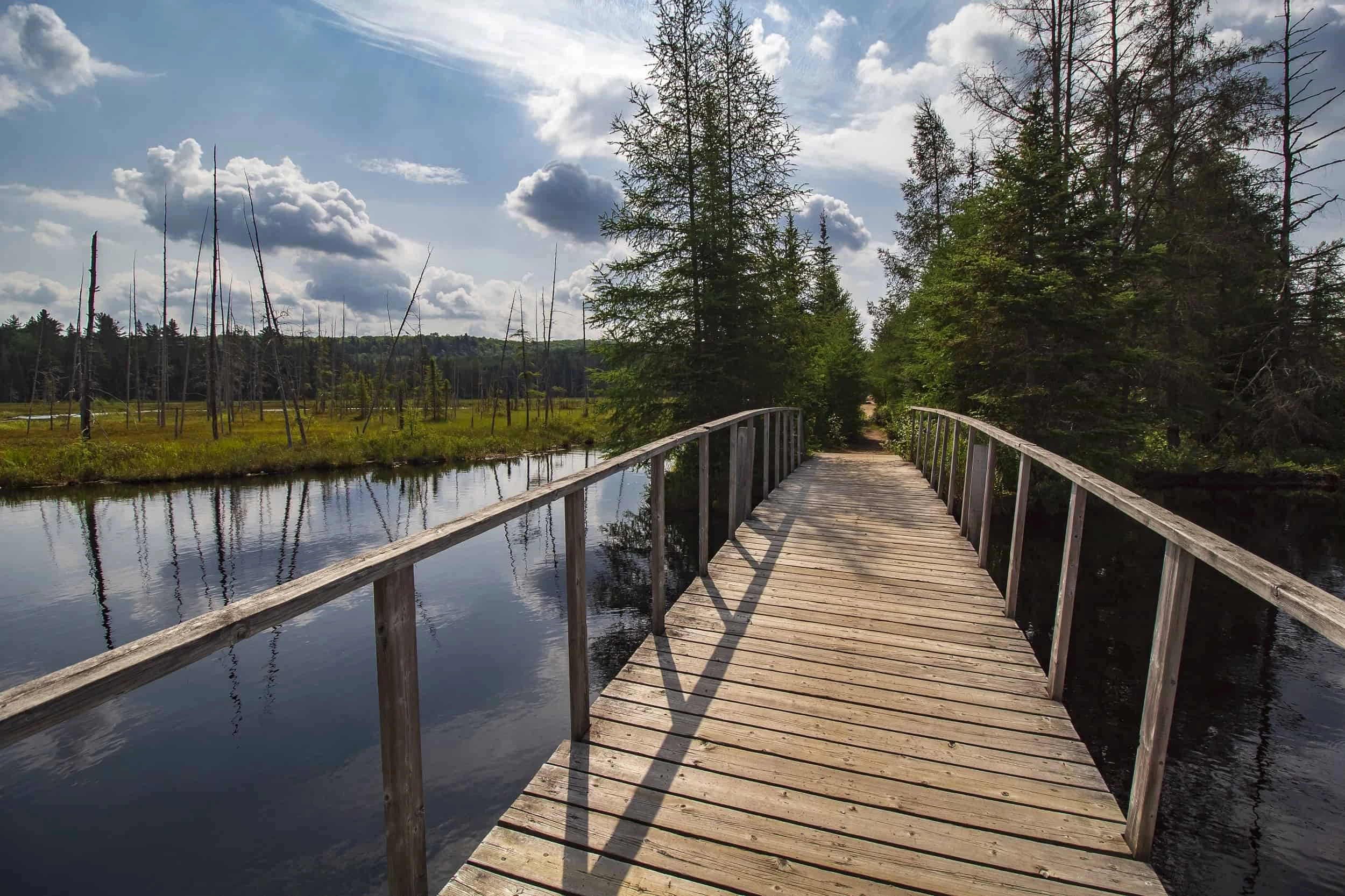
Before You Hit the Trails
One of the first things hikers should do is research each destination and the surrounding wildlife. Education is a necessary tool to further expand your knowledge on trails, wildlife and other information. Park staff is another resource many don’t utilize, and they have a plethora of knowledge of the park—so why not ask? It’s also important to know when the sun sets so you aren’t caught in the dark on a trail.
While on The Trail
As adventurers, it is our moral responsibility to follow ’Leave No Trace’ principles. It greatly benefits wildlife not to feed them or leave human food around—our food is not a natural part of their diet. Animals can become dependent, malnourished or die if fed the wrong foods.
Patrick told me that Algonquin Provincial Park had a fox that became habituated to being fed by roadside visitors. He even had a Facebook page! After being fattened up, ‘Old Man Fox’ was able to produce more offspring—and more mouths to feed. This had a chain reaction and impacted the park’s population of turtles. The foxes were feeding on the baby turtles and eggs, causing a decrease. Unfortunately, it didn’t stop there—Old Man continued to get his food from visitors and contracted mange from what wildlife experts believe to be a dog. This caused the community to feel responsible and a visitor tried to combat the problem with medication. Not only is it illegal, but it is irresponsible to administer medication without veterinary training and it could cause severe harm to the animal. A family of Canada Jays, an iconic Algonquin Park bird and subjects of long-term study, ended up ingesting some of the medication and were very likely lethally poisoned. What is also devastating was that one of the jays was over 15 years old, one of the oldest known individuals in over 60 years of study of these birds in Algonquin Park.
The moral of the story: Never feed wildlife. If you’re wondering where Old Man is now, he is with Aspen Valley Wildlife Sanctuary where he will carry out the rest of his life after being struck by multiple vehicles—due to habitual roadside feeding.
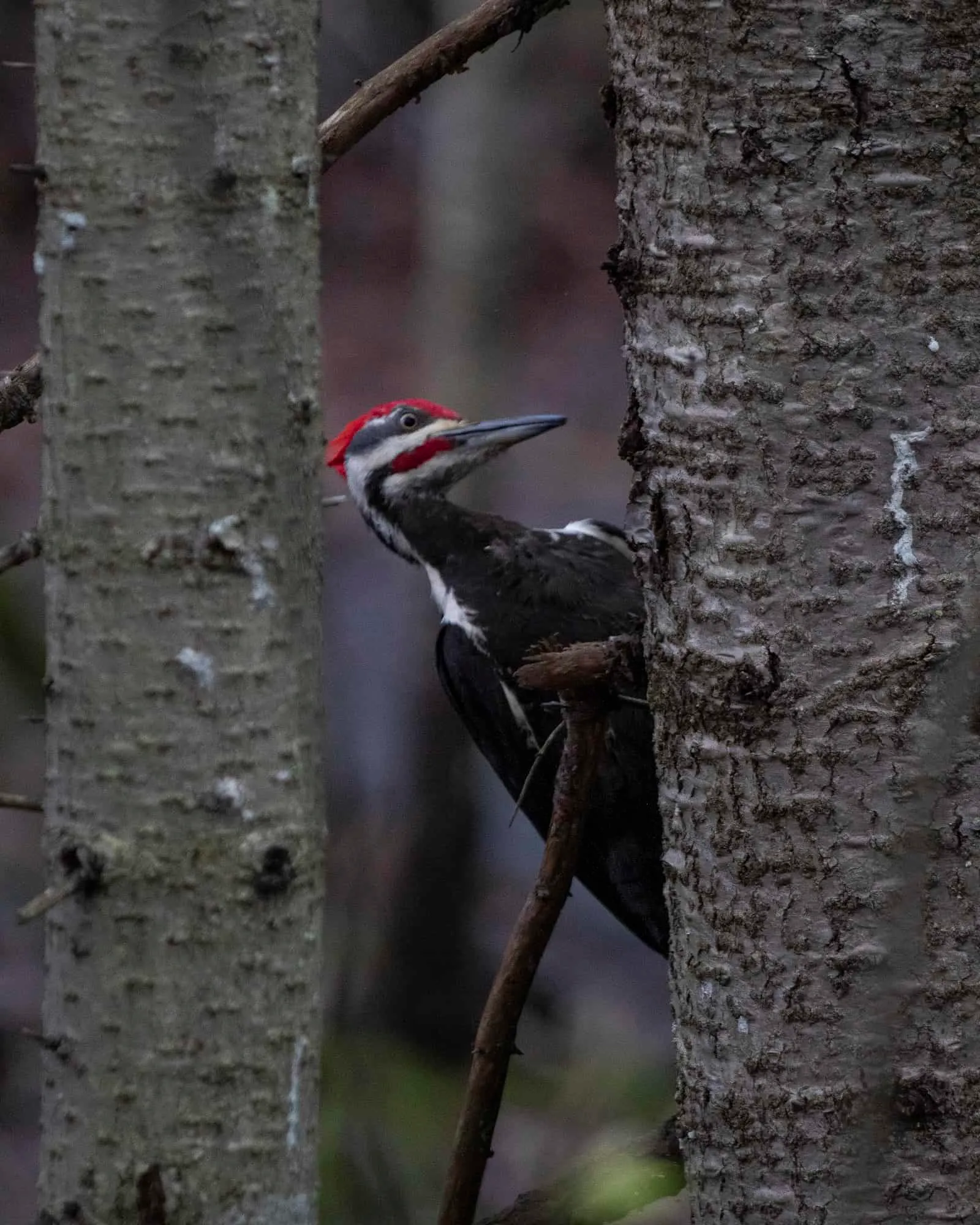
What to Be Concerned About While on the Trails
Most hikers are concerned about a negative altercation with a bear. Dehydration and slips or falls are much more common than bear attacks. Bring lots of water, snacks and footwear with strong treads and ankle support. Patrick also suggests layering up when hitting the trails in the summer, because biting bugs can cause swelling or other allergic reactions. Wearing light, breathable, long pants and shirts as well as a netted hat. Bug spray is typically the go-to solution for these pesky problems, but did you know most bug sprays that contain DEET can melt plastic? We are putting that onto our skin and then jumping into the lake to rinse off. Consider how this could hurt aquatic species including salamanders, turtles, frogs and birds.
What Do You Do When You Encounter a Bear?
Many adventurers carry bear spray; I personally carry a bear bell. The noise travels and lets bears know that I am coming, so they can flee before I even make it to where they are. If you do encounter a bear, it’s best to read the situation. Do not surprise the bear or make any sudden movements. Back away slowly, but never run or turn your back. A defensive bear’s body language will start with pinned back ears and you may hear popping sounds coming from its jaw. Another sign of a defensive bear is when they swat the ground. Learn more about the different types of bear interactions here.
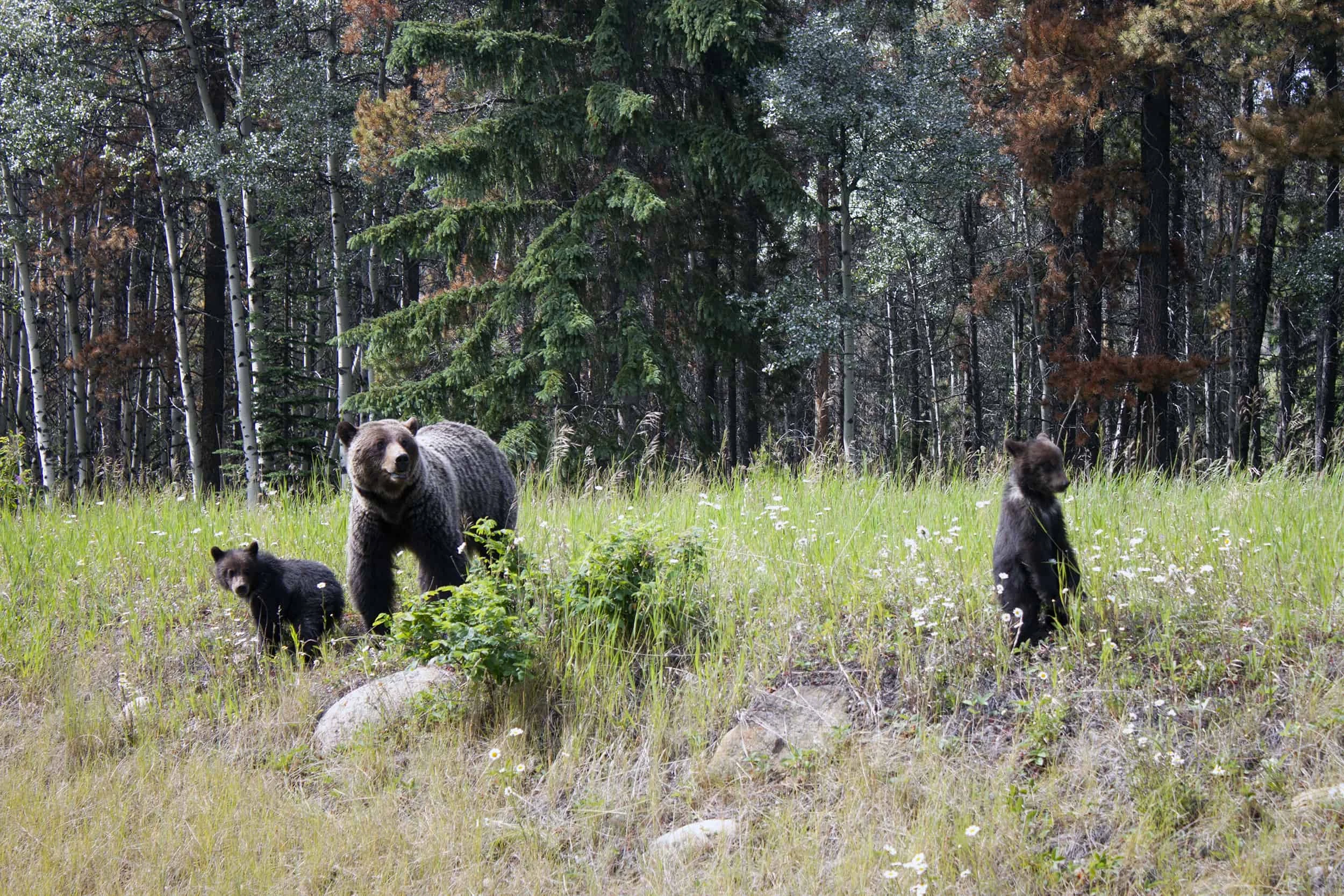
Wildlife is important to our planet and it is our responsibility to pick up after ourselves, respect their homes, remain unseen and arrive prepared. Please carry water with you when you are in the park, wear proper footwear and clothing, and be knowledgeable about your surroundings. Escaping the city for a wilderness visit to Algonquin Provincial Park will open your eyes to whole different side of Ontario. I encourage you to visit, stay safe and have fun!
PS. Need the right gear for your next outdoor adventure?
Four times a year, we’ll deliver a box full of brand-new adventure gear right to your door. Each box contains gear items valued at over $150 for only $97 plus tax!
Plus, you’ll get a list of challenges designed to motivate you to get outside and exploring!
And, oh yeah… there are HUNDREDS of epic gear prizes you can win, like snowshoes, tents & more!
What are you waiting for? Sign up now!
















Reading these tales makes me appreciate the beauty and unpredictability of nature. It’s a reminder to always stay alert and respectful of wildlife.